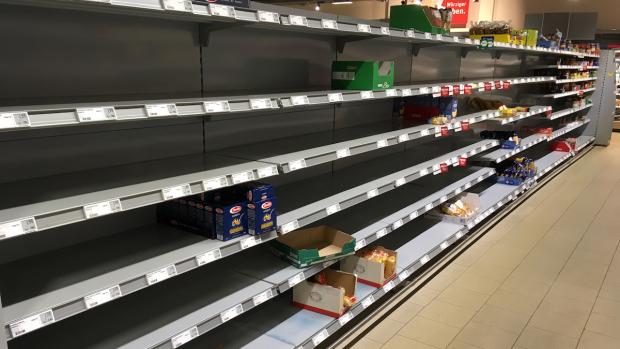Using crowdsourcing and computer modeling to mitigate the effects of panic-buying

Professor Zhu's research simulates panic-buying behavior with the aim to provide authorities with information needed to adequately allocate and provide resources.
Associate Professor of Electrical and Computer Engineering Quanyan Zhu can understand why people have been emptying store shelves of milk and hand sanitizer. “Panic is a natural human behavior,” he says. Pair a propensity for panicked hoarding with the human predilection for sharing on social media, he explains, and a vicious cycle occurs: frantic buying drives Facebook and Twitter posts about shortages (real or perceived) beyond local markets, leading to further panic buying. “The subsequent shortages could include critical resources, such as medical supplies, which we have already seen,” he says. “People who need these goods in terms of vulnerability to infection, now don’t have them.”
The situation could be mitigated, Zhu believes, by reducing the panic response in social communities — an outcome that could be achieved by detecting misinformation in real-time, reinforcing the right information, and, on a broader level, allocating resources according to which regions are most likely to be subject to hoarding-related shortages. Zhu has received a National Science Foundation Rapid Response Research (RAPID) grant for his research, "Effective Resource Planning and Disbursement during the COVID-19 Pandemic," to develop models of population behavior that will make it easier to perform these tasks. The $150,000 grant will support his efforts to develop a framework that captures the linkages and inter-dependencies between networks that govern information spreading, panic spreading, and disease spreading in urban populations.
Zhu began researching the phenomenon very early on in the crisis, sending students to visit supermarkets near campus to collect hourly changes in stocks of fresh food, hand sanitizer, and other items. When in-person research became ill-advised, the team moved to crowdsourcing techniques, asking people via an on-line platform to perform specific tasks — such as taking and uploading time-stamped pictures of store shelves in their own neighborhoods. Concurrently, he is examining how often keywords such as virus, lockdown, and quarantine appear on social media to track how panic-buying data and data on social-media usage are correlated.
The team — which includes Professor Rae Zimmerman of NYU Wagner and Professor Lorna Thorpe of NYU Langone — plans to develop web-based tools and software solutions that can be helpful for the NYC Office of Emergency Management, NYC City Planning Department, and the NYU Langone Medical Center, in providing an effective medical response to newly emerging COVID-19 cases.
“Through agent modeling, we can simulate the behavior of humans in large populations, so with the right data we can simulate the vicious cycle of panic buying and the social spread of misinformation,” he explains. “The ultimate goal of the project is to measure the impact of panic, how it spreads among neighborhoods in light of the structure of information flows that are often unstructured, and how this information can be used by authorities to adequately allocate and provide resources that are critical to the prevention of spreading. The lessons learned and the tools developed can be useful not only as the COVID-19 situation evolves but also in other similar events and emergency situations.”




